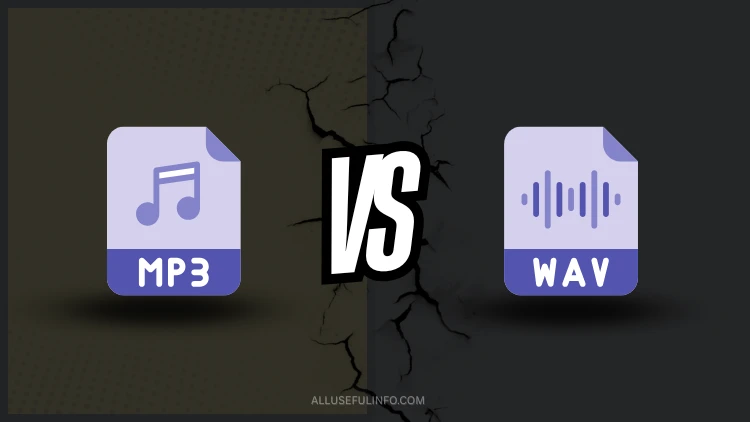Of course, we all know what an MP3 is, right? Almost every song or ringtone we download is in MP3 format. You can simply say that an MP3 is a compressed sound file, small in size but still sounds great.
But the real confusion begins when we see something called a WAV file. Many people don’t know what a WAV file actually is and how it is different from an MP3.
So today, with the help of this article, I’m going to clear your confusion and explain the main differences between WAV and MP3 in a simple and easy way. So, without wasting much time, let’s start!
What is a WAV File?
WAV stands for Waveform Audio File Format. It was created by Microsoft and IBM a long time ago, in 1991.
A WAV file is an uncompressed audio file. This means it keeps every little detail of the original sound, just like a photo with no blur or filters.
Because WAV files have no compression, they sound very clear and natural. That’s why they are mostly used for high-quality audio work, like recording in studios, making music CDs, or editing professional soundtracks.
But there’s one small problem: WAV files are very large in size.
For example, a one-minute WAV file can take around 10 MB of space on your computer. So, if you have a 5-minute song, it may take about 50 MB or even more!
What is an MP3 File?
MP3 stands for MPEG Audio Layer III. It was created by a group of engineers to make audio files smaller and easier to share.
MP3 uses something called compression, which means it removes the parts of the sound that human ears can’t really notice. The result is a file that is much smaller in size but still sounds good to our ears.
For example, a one-minute MP3 song may take only 1 MB of space, while the same song in WAV format may take 10 MB.
That’s why MP3 became so popular, it’s small, fast to download, and works on almost every device, from phones to computers and even music players.
Read Also: How To Combine Multiple MP3 Songs Into One Track
Main Differences Between WAV and MP3
Let’s look at some simple and clear differences between WAV and MP3 files:
Sound Quality: WAV files have the best sound quality because they are not compressed. MP3 files are compressed, so some sound data is lost, but still good enough for normal listening.
File Size: WAV files are big in size. MP3 files are small and take very little space.
Use Case: WAV files are used in studios or for editing. MP3 files are perfect for sharing online, playing in your phone, or streaming music.
Speed: Because WAV files are large, they take longer to upload or download. MP3 files are much faster to share or transfer.
Editing: WAV is best for sound editing because it has full sound details. MP3 is not suitable for editing since some sound parts are already removed.
Streaming: WAV files are not good for streaming on the internet because they are heavy. MP3 files are perfect for streaming as they load faster.
Quick Example
Imagine you recorded your own song. If you save it as a WAV file, it will sound exactly the same as when you recorded it, crystal clear! But if you save it as an MP3, the sound will still be good, but a little less sharp. The plus point is that the file will be much smaller and easier to share with friends.
Which One Should You Use?
If you want the best sound quality or you are working on music production or editing, use WAV.
If you just want to listen to songs, share music, or save space, use MP3.
So, it really depends on what you need, quality or size.
Read Next: How to Convert MP4 Video into MP3 Format
Final Words
Now you must have clearly understood the basic difference between WAV file and MP3. Both have their own use. WAV gives you the best sound quality, while MP3 saves you space and time.
I hope this simple explanation helped you understand the topic better. If you found it useful, don’t forget to share it with your friends who are still confused about WAV and MP3!



![10 Best Podcast Recording and Editing Software [2024] 10 best software for podcast recording and editing](https://allusefulinfo.com/wp-content/uploads/2022/02/software-for-podcast-recording-editing.jpg)
